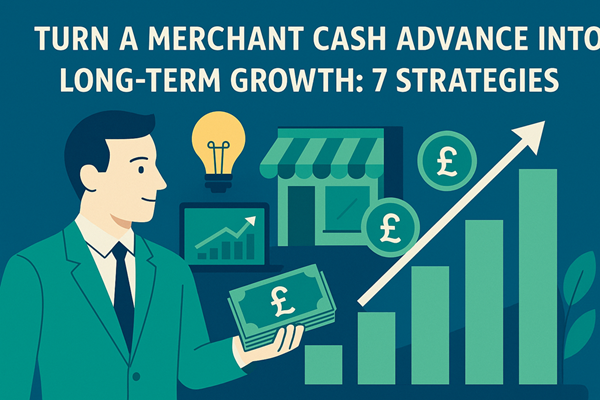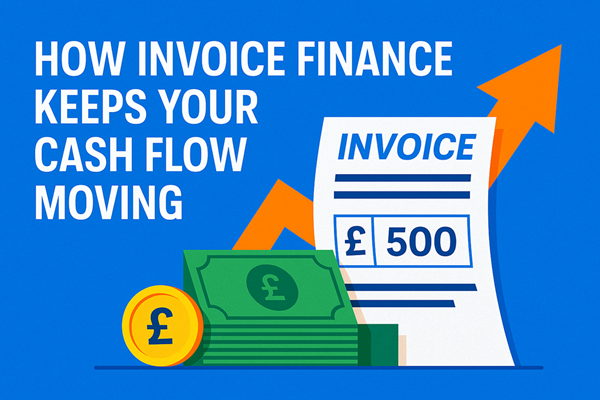Turn a Merchant Cash Advance into Long-Term Growth: 7 Strategies
A merchant cash advance (MCA) can feel like a lifeline when your business needs quick funding. It’s fast, flexible, and doesn’t involve the hurdles of a traditional bank loan. But because MCAs are short-term and often come with higher costs, using them wisely is crucial. If you treat an MCA as just a stopgap, it can drain your profits. If you use it strategically, however, it can drive lasting growth and help your business thrive.
Here are seven proven ways to turn short-term MCA funding into sustainable profit, so you don’t just survive; you grow.

1. Invest in revenue-generating marketing
Instead of plugging gaps with your MCA, channel it into initiatives that directly boost sales. Paid social campaigns, local advertising, or search engine ads can bring in new customers fast. Track results closely; every pound spent should generate measurable returns. For example, a café might use MCA funds for a targeted Facebook campaign to launch a seasonal menu, bringing in repeat customers well beyond the repayment period.
2. Stock up for busy seasons without overstretching cash flow
Retailers, hospitality businesses, and e-commerce sellers often miss out on peak-season profits due to low inventory. Using MCA funds to bulk-purchase popular items before demand spikes lets you sell more at the right time. The key is forecasting sales properly; you want to avoid overbuying stock and tying up cash unnecessarily.
3. Upgrade equipment to reduce costs
An MCA can cover equipment upgrades that lower long-term expenses. For instance, a restaurant might invest in energy-efficient appliances that cut utility bills, or a salon might upgrade to faster, more efficient tools to serve more clients each day. Even though repayment happens quickly, the cost savings continue long after the MCA is cleared.
4. Launch a new product or service
Diversifying your offering can open new revenue streams. If you’ve wanted to launch a delivery service, introduce a new product line, or offer a subscription package, MCA funds can help you do it without eating into your working capital. Make sure to research your market so the launch aligns with customer demand, not just a hunch.
5. Negotiate better supplier deals
Paying suppliers upfront using MCA funds can help secure bulk discounts or favourable long-term contracts. This not only reduces costs per unit but also strengthens relationships with your vendors, putting you in a better position for future negotiations. Over time, the savings can outweigh the cost of the advance.
6. Smooth out the cash flow to avoid disruption
Seasonal dips or late-paying clients can leave businesses scrambling to cover wages, rent, or critical expenses. Using an MCA to bridge these gaps prevents service interruptions, which can harm your reputation and cost you customers. The trick is to avoid treating this practice as a habit; use the breathing room to put stronger cash flow systems in place, like improved invoicing processes or retainer contracts.
7. Consolidate high-cost debt (only if the numbers work)
Sometimes, an MCA can help restructure your finances by paying off older, more expensive debt. But only do this if the repayment terms of the new advance actually reduce your overall cost of capital. Run the numbers carefully; the aim is to free up cash flow, not make your financial position tighter.

Making it work for your business
An MCA isn’t free money; the repayments are frequent and can strain your cash flow if you’re not prepared. To make it work for your business:
- Have a clear plan before you take the funds.
- Track the return on every pound you spend.
- Set aside a buffer for repayments so you’re not caught off guard.
Used strategically, a merchant cash advance can do more than just plug a gap, it can be the springboard your business needs to scale, evolve, and secure lasting success.






